Dan Archambault, Canada
540K Spezial Roadster
Video
We Pocher builders are in a class by ourselves. With our exotic classic cars composed of thousands of arcane components, and our reliance on diabolical instruction booklets seemingly written by sadistic Italian artisans, we like to tell each other that just getting a model up on its wheels is an accomplishment worthy of celebration. And it is. But there are among us a few builders who want more than a scale model 'up on its wheels'; they want a scale model that is a weapons grade assault on the challenge that is a Pocher. They want their models not only up on their wheels but capable of delivering a body-blow to fellow builders. They want a knock-out punch. Oh, they are friendly enough and they are careful to compliment the efforts of their fellow builders, no matter how modest nor tentative. But deep down inside, at the very root of their
drive to build a Pocher, is their secret desire to hear the despairing groan of defeat-the sound of capitulation. How else do we explain Rolls-Royces with hand-made Louis XIV rococo furniture, or packed with Holland and Holland shotguns? As in all things competitive, many may swing but only a very few land the punch. From now on, Canadian Daniel Archambault is on the list of those who took a swing that connected.
The challenges inherent in the Pocher version of the Special Roadster have been well documented: the dowdy profile, the tin accessories, the cantankerous assembly. Scores of us have sliced and diced our way to a better profile, added beautiful bronze details from MMLtd., and ventured far beyond the Pocher instruction manual. Beautiful models have resulted and they have done their job of inspiring others and bringing their builders praise and notoriety. From now on, what worked then no longer works. From now on to succeed in the world of the exalted Mercedes-Benz 540K, one must slice and dice the profile, convert the engine to 540K specifications, add scores of MMLtd. Bronze castings, finish with a glorious leather interior and spray a magnificent paint job, but all will be for naught if there is no working top. Not just a working top, but one with the correct framework under the prototypical swinging hatch. No more relying on scribed lines to represent the hatch itself, now the hatch must function and the top frame must collapse into the tiny space behind the seat, and when erect, engage the slender V'ed windshield that is the signature of the prototype and used to be the knock-out blow back in the early days when MMLtd. needed proof that it was going to be a player in the world of Pocher after-market accessories. It seems so long ago that one could simply add a few cast windshield posts and be a player. Now, not so much.
Listen carefully and you can just hear the objections to needing such a contrivance on a Pocher-"when the thing is up you can't see the interior"; "there's no way to make it look realistic if it actually works"; "even some prototype cars don't have a working top"-but those of us who thrive on the groan of defeat know what must be done. All we can do now is hope and pray that Mr. Archambault publishes drawings of his mechanism (unlikely), that MMLtd. Issues a "Working Top Kit" (even less likely), or that Mr. Archambault at least points us in the right direction for photographs of the prototype.
Even if Mr. Archambault takes pity on the rest of us and selflessly gives his secrets away, he will still be a legend among Pocher builders because it was he who saw the obvious, and he who solved so many problems: It was he who left off the fabric which allows the interior to be seen when the top is up, allows the mechanism to be admired both up and down, and allows the whole thing to fit behind the seat! Congratulations, Mr. Archambault, you have done for the Pocher Mercedes what John Haddock has done for the Pocher Rolls-Royce engine. All Hail Archambault! May you use your power wisely.
Addendum: Mr. Cox is well aware that functioning tops have been seen on models long before this on both scratch-built models and mass-produced die-cast metal such as from Danbury Mint. When he writes of models, he writes of Pochers and only Pochers-all else is seen as through a glass, darkly.





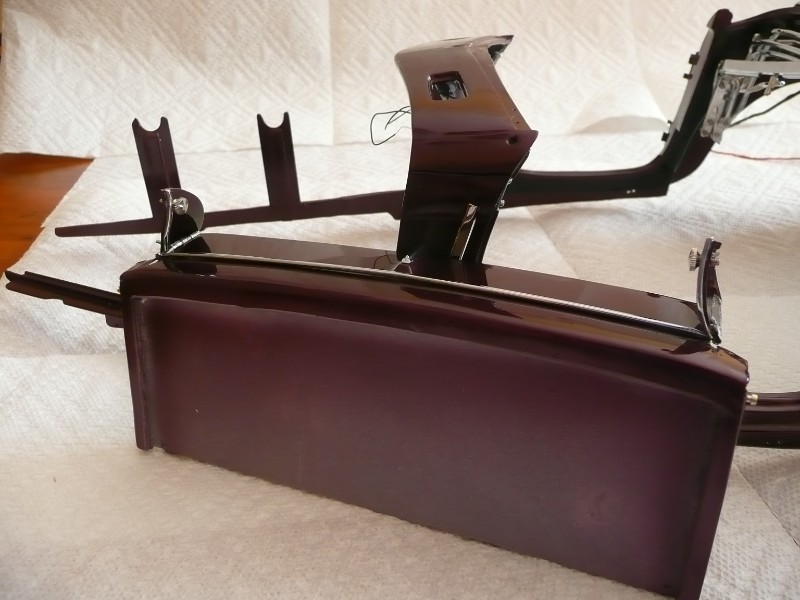








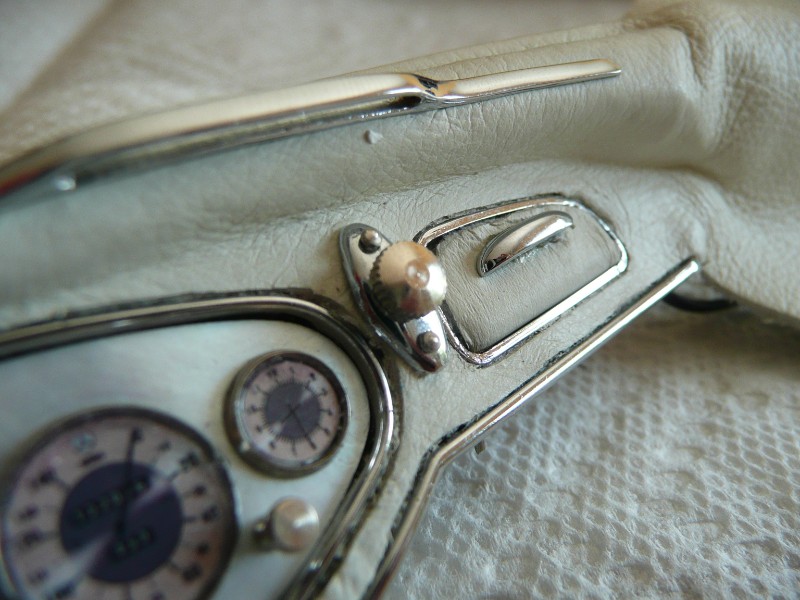



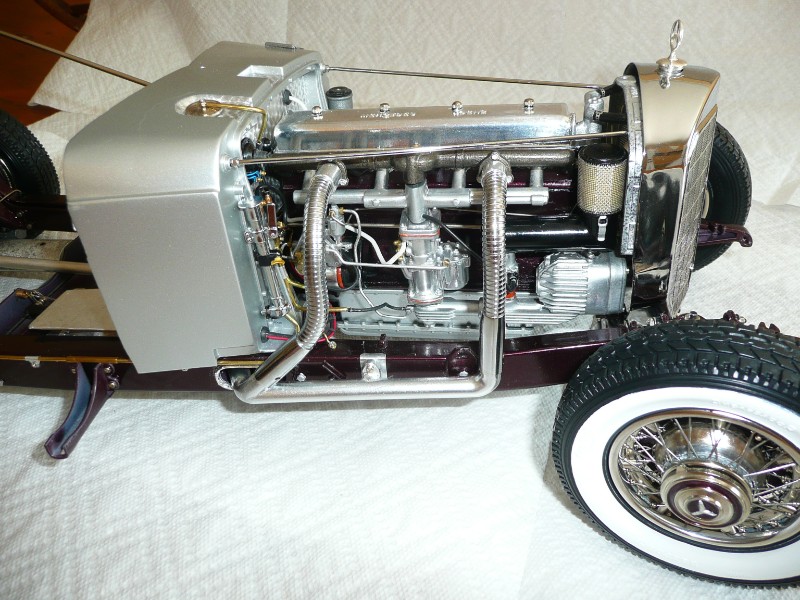







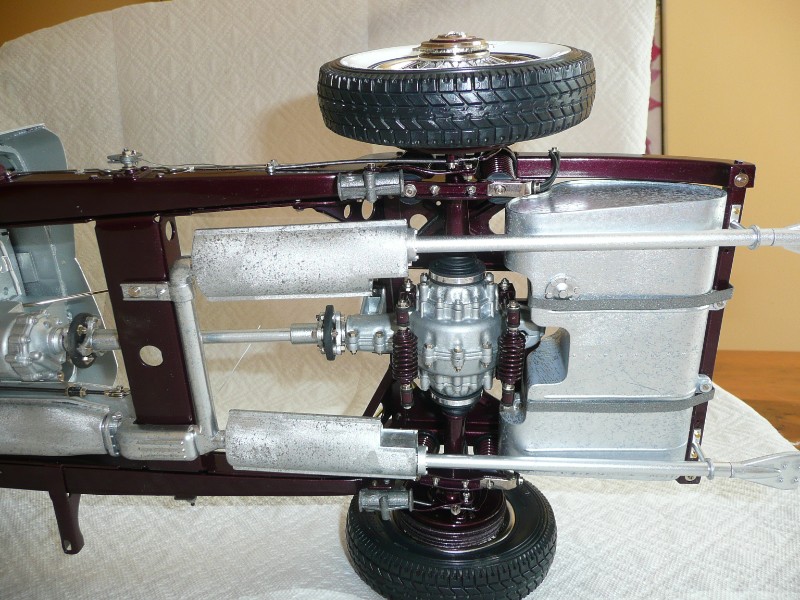


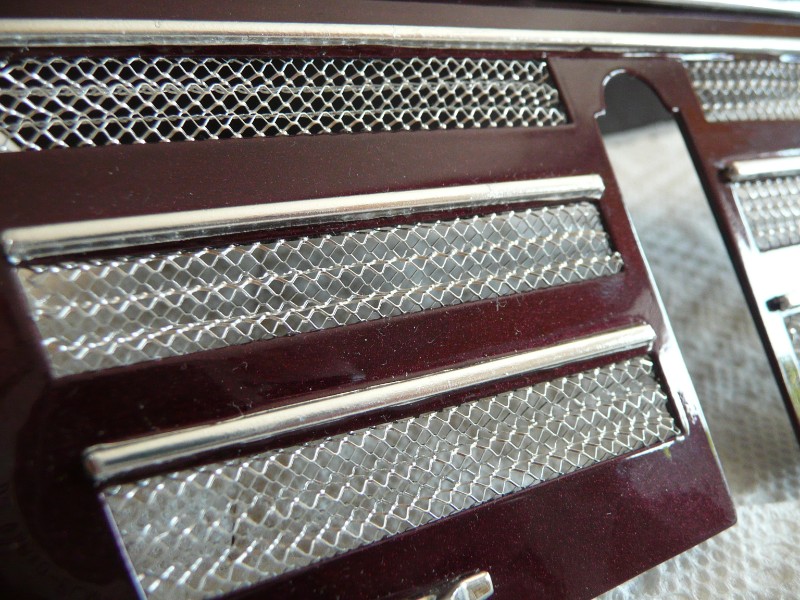



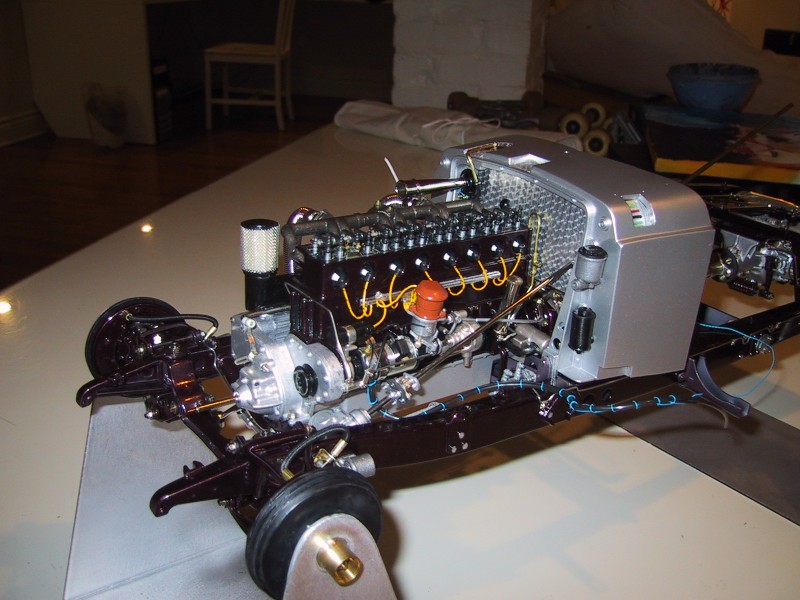















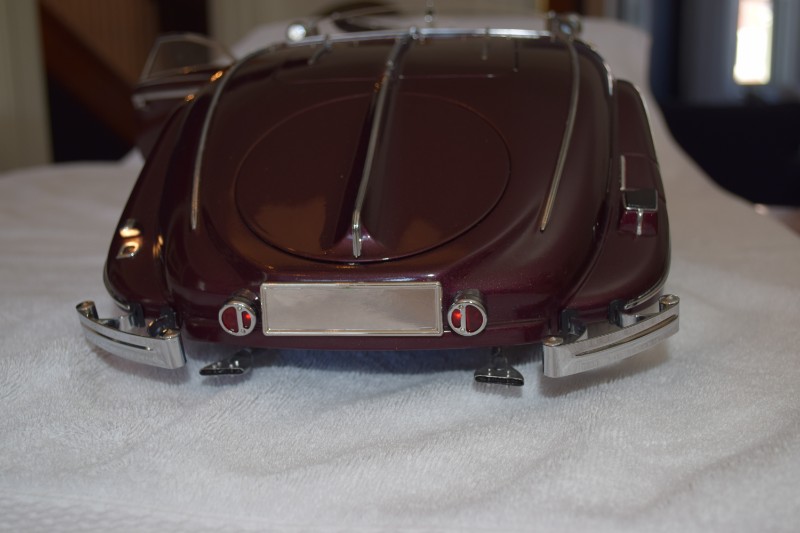


















You must be logged in to post a comment.